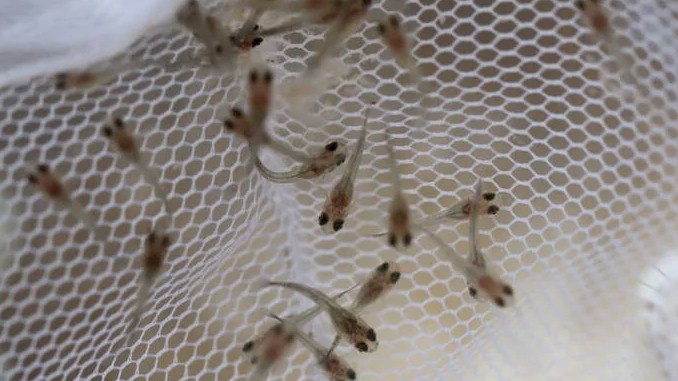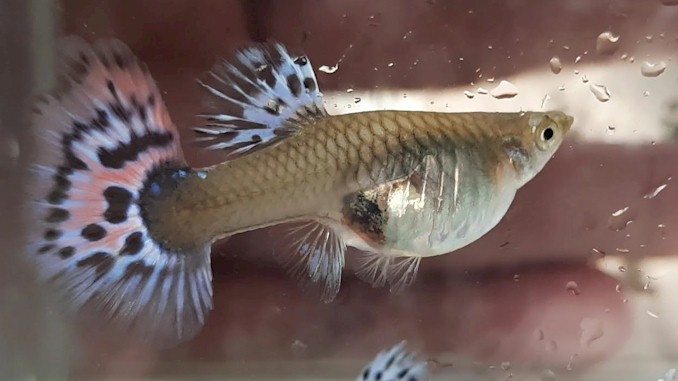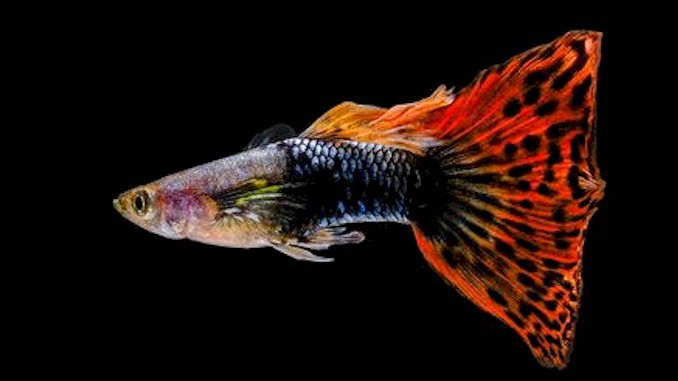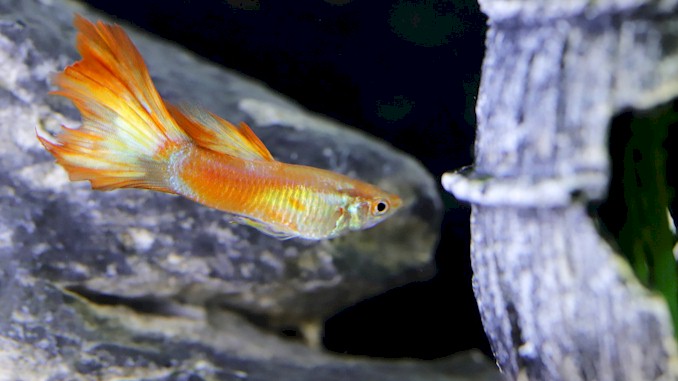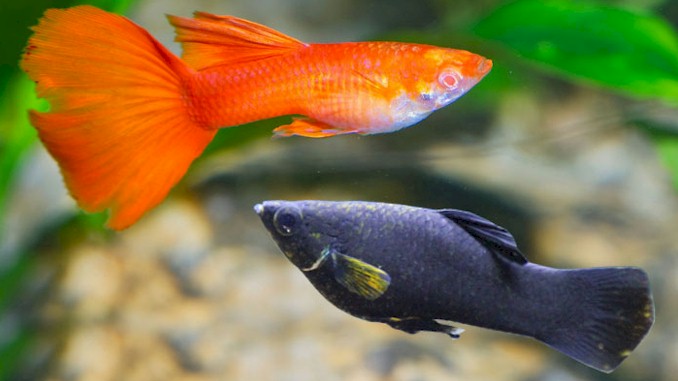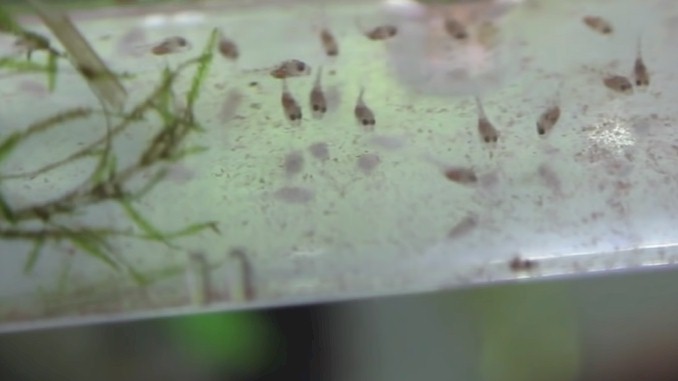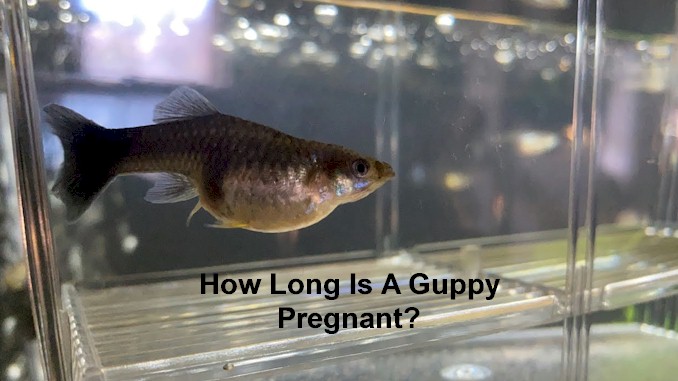Managing Your Guppy Population: Expert Tips
The rate at which guppies reproduce is astonishingly fast, surpassing even my wildest expectations. Within a short span of time, I was astounded to discover that my aquarium was teeming with an overwhelming number of fry. Concerned that the rapidly expanding guppy population could quickly damage the healthy habitat of my aquarium, I embarked on a journey to discover effective solutions for dealing with these surplus guppy fry. In this article, I will share the valuable lessons I learned during my research.
When faced with unwanted guppy fry, there are several options available to the aquarium owner. One of the most common solutions is to separate the fry from the adult fish and either give them away to other fish keepers or sell them to a pet store. Another option is to let nature take its course and allow the adult fish to consume the fry. Some aquarists choose to use chemical treatments or specialized filters to prevent the fry from hatching, but these methods can be risky and should only be used with caution. Ultimately, the best course of action will depend on your personal preferences and the specific needs of your aquarium.
If you’re still feeling uncertain about what to do with your unwanted guppy fry, don’t worry. In the following paragraphs, I’ll provide a more detailed explanation of each option, including the pros and cons of each method. I’ll also share some tips on how to prevent your guppies from breeding too quickly, as well as some creative ways to use your surplus fry. So, if you want to learn more about how to manage your guppy population and keep your aquarium thriving, keep reading!
Separating Guppy Fry: How to Do It and Why It’s Important
Guppy fry can quickly overpopulate an aquarium, leading to health problems and even death among the fish. One of the most effective ways to manage your guppy population is by separating the fry from the adult fish. But how do you do it, and why is it important?
First, let’s talk about how to separate guppy fry from the adult fish. The most straightforward method is to use a net to scoop out the fry and transfer them to a separate container, such as a breeding net or a plastic container with an airstone. Alternatively, you can use a specialized breeding box that attaches to the inside of your aquarium and allows the fry to safely grow without being harmed by adult fish. Whichever method you choose, it’s important to make sure that the container you use is adequately sized and has proper filtration and aeration to keep the fry healthy.
But why is separating guppy fry from adult fish so crucial? For one, adult guppies may see the fry as a source of food and try to eat them, which can result in injury or death for the young fish. Separating the fry from the adults ensures their safety and allows them to grow and thrive without being threatened by larger fish. Additionally, removing excess fry from your aquarium can help keep the water quality stable and prevent overcrowding, which can lead to stress, disease, and even death among your fish.
As you see, separating guppy fry from adult fish is a crucial aspect of managing your guppy population and maintaining a healthy aquarium. By using proper methods and equipment, you can ensure the safety and well-being of your fry while preventing overpopulation and maintaining water quality.
Natural Selection: Letting Adult Fish Consume Unwanted Fry
If you’re hesitant to separate your guppy fry from the adult fish, you may be wondering if there are alternative solutions. One option is to allow natural selection to take its course and let the adult fish consume the unwanted fry. While this method may seem harsh, it is a natural process that occurs in the wild and can be an effective way to manage your guppy population.
Adult guppies are known to eat their own fry, which can help keep the population in check. However, it’s important to note that not all adult fish will eat the fry, and some may even actively protect them. If you choose to let natural selection occur, it’s crucial to monitor the situation closely and remove any fry that appear to be in danger.
Another consideration when using natural selection is the impact on water quality. As the fry are consumed, their bodies break down and release nutrients into the water. This can lead to an increase in ammonia and nitrite levels, which can be harmful to your fish. It’s essential to monitor water parameters and perform regular water changes to maintain healthy water conditions.
So, allowing natural selection to occur can be an effective way to manage your guppy population without the need for manual separation. However, it’s important to monitor the situation closely and take steps to maintain water quality. This method may not be suitable for all aquariums, and separating the fry may be a better option for some fish keepers. Ultimately, the best course of action will depend on your personal preferences and the needs of your aquarium.
Chemical Treatments and Specialized Filters: Risks and Benefits
Chemical treatments and specialized filters can also be used to manage unwanted guppy fry in your aquarium. However, these methods come with their own set of risks and benefits that should be carefully considered before use.
Chemical treatments, such as copper-based medications, can be effective in killing guppy fry. However, they can also harm adult fish and other aquatic life in your aquarium. Additionally, these treatments can have a negative impact on water quality and may require additional steps, such as activated carbon filtration or water changes, to ensure the health of your fish. It’s crucial to carefully follow dosage instructions and monitor water parameters closely when using chemical treatments.
Specialized filters, such as protein skimmers or foam fractionators, can be used to remove guppy fry from your aquarium. These filters work by creating foam that captures the fry and allows them to be removed from the water. While these filters can be effective, they may also remove beneficial organisms and compounds from your aquarium, leading to imbalanced water conditions. Additionally, these filters may not be suitable for all aquariums, and their effectiveness may vary depending on the size and species of your fish.
As you can see, chemical treatments and specialized filters can be effective ways to manage unwanted guppy fry, but they also come with risks and benefits that should be carefully considered. These methods may not be suitable for all aquariums, and manual separation or natural selection may be a better option for some fish keepers. Ultimately, the best course of action will depend on your personal preferences and the needs of your aquarium. It’s crucial to carefully research and consider all options before making a decision.
Preventing Guppy Overpopulation: Tips and Strategies
Preventing guppy overpopulation is key to managing unwanted fry in your aquarium. Here are some tips and strategies to help keep your population in check:
- Limit your stocking levels: Be mindful of the number of guppies you add to your aquarium. Overstocking can quickly lead to overpopulation and can cause stress and disease in your fish.
- Separate males and females: Keeping male and female guppies in separate tanks can help prevent breeding and overpopulation. This method can be especially useful for breeders who want to control their breeding lines.
- Provide hiding places: Providing hiding places, such as plants or caves, can help give fry a place to hide from adult fish. This can help increase survival rates and prevent overpopulation.
- Feed your fish a balanced diet: Providing your fish with a balanced diet can help reduce breeding behavior and prevent overpopulation. Overfeeding can also lead to excess waste and poor water quality, which can further exacerbate the problem.
- Regularly remove excess fry: If you do end up with unwanted fry, it’s important to regularly remove them from your tank. This can help prevent overpopulation and keep your aquarium healthy.
If you consumed and applied these tips and strategies properly, you can help prevent guppy overpopulation and keep your aquarium thriving. Remember, prevention is key when it comes to managing unwanted guppy fry.
Surplus Fry Solutions: Creative Ideas for What to Do with Unwanted Guppy Fry
Sometimes, despite our best efforts, we end up with more guppy fry than we know what to do with. Here are some creative solutions for dealing with surplus fry:
- Sell or trade them: If you have a local aquarium club or pet store that accepts fish, you can try selling or trading your surplus fry. Some breeders even specialize in guppies and may be interested in buying your fry.
- Give them away: You can also consider giving your surplus fry away to friends or family who have their own aquariums. Just be sure to inform them of the proper care and housing requirements for guppy fry.
- Donate them to a school or community center: Schools or community centers may have aquariums that could benefit from a donation of guppy fry. This can also be a great way to teach others about fish care and responsibility.
- Use them as food for larger fish: If you have larger fish in your aquarium, you can use surplus fry as a source of food. This can be a natural and cost-effective way to feed your fish.
- Create a separate breeding tank: If you’re interested in continuing to breed guppies, you can create a separate breeding tank specifically for surplus fry. This can help you manage your population and create a self-sustaining ecosystem.
By thinking outside the box and getting creative, you can find a solution for dealing with surplus guppy fry that works for you. Remember, the goal is to provide the best care possible for your fish and maintain a healthy, thriving aquarium.

